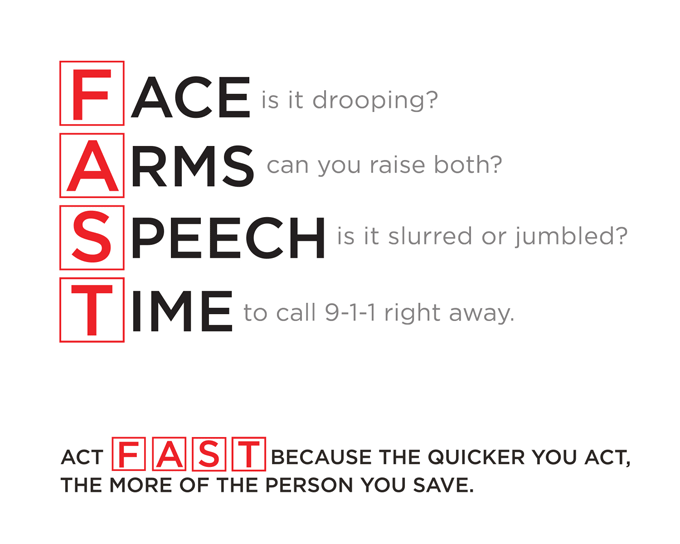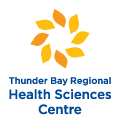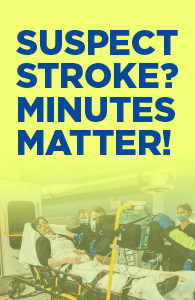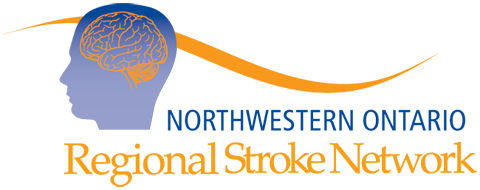STROKE IS A MEDICAL EMERGENCY!

A stroke occurs when blood flow is interrupted to the brain. There are two types of stroke, ischemic or hemorrhagic. Ischemic strokes are caused by a blockage or clot in a blood vessel in the brain, or from a clot that travels up to the brain (usually from the heart or major arteries). Hemorrhagic strokes are caused by a bleed which can occur when an artery in the brain ruptures. Ischemic strokes are much more common than hemorrhagic strokes.
A transient ischemic attack (TIA), sometimes called a mini stroke is also considered a medical emergency. It is caused by a small clot that blocks an artery only for a brief period of time. Even though there is no permanent damage from a TIA, it is a serious warning that you are at a higher risk of having a stroke. The symptoms of a TIA are similar to a stroke but they fully resolve. Treatment is still needed FAST.
Research shows approximately 44% of Canadians are unable to identify any stroke symptoms. The acronym FAST is a tool which makes this easy to remember. Face – is it drooping? Arms – can you raise both? Speech – is it slurred or jumbled? Time – call 911 right away. Do not drive yourself or your loved ones to the hospital. Paramedics can get you there safely and quickly. The major focus here is time. Time is brain. Time plays a key role in getting treatment and recovering from a stroke. On average, 2 million brains cells (neurons) are lost for every minute of delay in restoring blood flow to the brain. The effects of stroke will be different for each person. A stroke can be mild, moderate or severe which is why FAST evaluation and treatment are needed. There are important questions that need to be answered when someone is experiencing a stroke:
What type of stroke is it? A head scan (CT) needs to be done to see if the stroke is ischemic or hemorrhagic.
When was the patient last seen normal? There is a 4.5 hour window to receiving a medication that works to break up the clot. This is not an option for a hemorrhagic stroke.
What side of the brain is involved? This helps to understand the symptoms the patient is experiencing.
What size is the damaged area of the brain? This helps to map out a plan of care while in hospital.
All of these questions can be answered in a timely manner if people remember the acronym FAST. Being able to recognize stroke symptoms quickly can change the length of recovery time.






